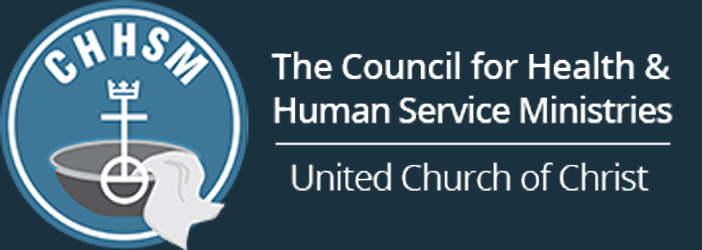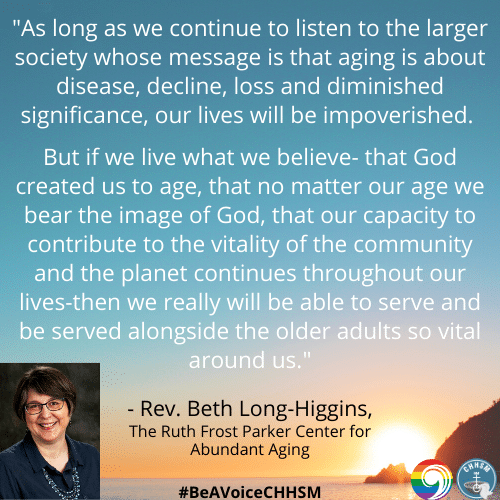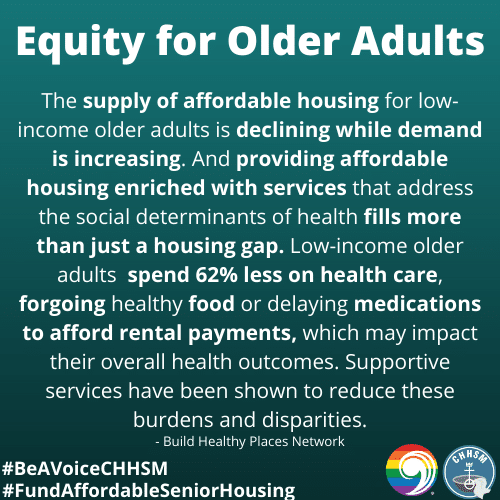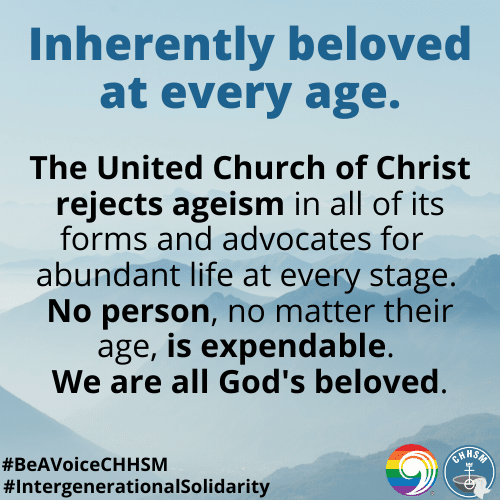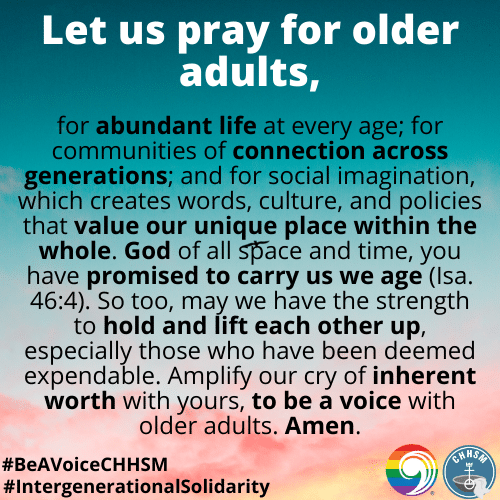CHHSM Advocacy Center
Vol. 5: Services to Older Adults
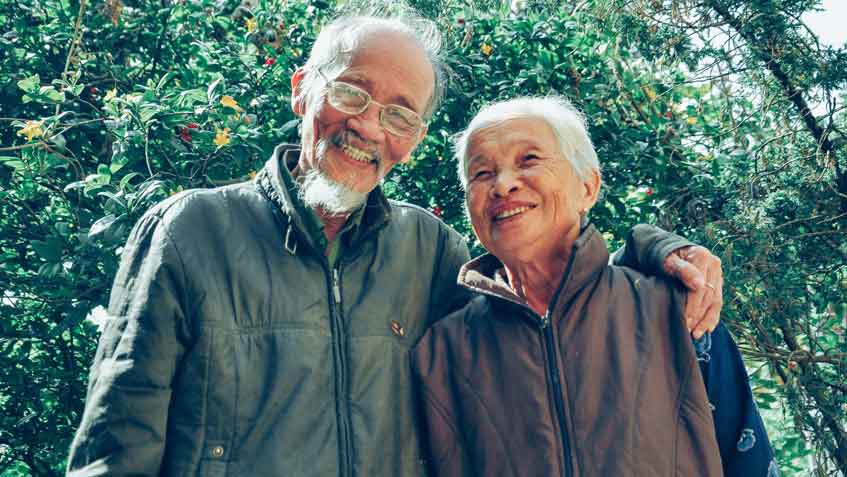
Beth’s Story

“As long as we continue to listen to the larger society whose message is that aging is about disease, decline, loss and diminished significance, our lives will be impoverished,” says Rev. Beth Long-Higgins, Executive Director of the Ruth Frost Parker Center for Abundant Aging. The Center is a unique initiative of CHHSM member organization United Church Homes (UCH) and brings together current theory and practice in the fields of gerontology, geriatrics, spirituality and aging, health care, housing and public policy to improve the quality of life for older adults. UCH provides a wide range of services such as affordable housing, health care communities, home health care, and assisted living and retirement communities. Yet regardless of the type of service provided, Long-Higgins says, “ideally we are providing the environment in which residents can express meaning and purpose and find new ways to contribute to the larger society–to be places for increased creativity, learning, and intellectual, spiritual, and emotional growth.”
Long-Higgins notes that when discussing services to older adults, the age range is more than 30 years and across two-to-three generations of people. Their needs are as different as their life stories.
Moreover, even for organizations like UCH who have a mission to care for and work with older adults holistically, challenges remain to meet the growing demands of an increasing community of people fortunate enough to live seven, eight, nine, or more decades. In her work at the Center, Long-Higgins has found new ways to reimagine what these older years can be and envisions such possibilities alongside older adults, honoring and centering their perspectives. “We are wasting the wisdom of their experience and dishonoring the value of their life work when we fail to meet their needs in their later years,” Long-Higgins says.
Another crucial way the Center is reimagining life for older adults is in changing the narrative around aging and confronting ageism head-on. Perhaps now more than ever, the importance of this work cannot be overstated. As Long-Higgins describes, “During the COVID-19 pandemic we have seen ageism rear its ugly head in suggesting that older individuals are expendable and that trying to keep them safe at the expense of our economy is a waste. Never mind the fact that keeping everyone safe should have been the goal. The reality is that there is nothing we do to serve older adults that doesn’t improve the lives of all ages.”
As a faith-based organization, the Center also provides education and outreach to congregations on how the church can change the way it views ministry with older adults. Often when congregations are full of older members, people perceive it is a sign that the church is dying. Yet for Long-Higgins, “it can be a real source of life” and an untapped source of how we live out the Good News. “If we live what we believe–that God created us to age, that no matter our age we bear the image of God, and that our capacity to be co-creators and contributors to the health and vitality of the community and the planet continues throughout our lives–then we really will be able to serve, and be served, alongside the older adults so vital around us.”
Definitions
Particularly coming from a social justice perspective, discussing services to older adults can encompass a broad range of issues. To provide a foundation for this conversation, below are some helpful definitions from a variety of sources committed to this work.
- Ageism: prejudice, discrimination, and stereotypes based on age. A few examples include: losing or not being hired for a job because of your age; receiving lower quality of service; "anti-aging" products and services; providers directing comments about an older person at a younger companion or child of the older person rather than to the older person directly; patronizing language; and assumptions about your values or abilities based on your age.Like other forms of discrimination, ageism can be present at every level: internalized within the individual, in unjust treatment towards others, in culture and perspectives, and in structural systems. As Kirsten Jacobs of LeadingAge notes, “It shows up in advocacy and policies that value safety over autonomy and assume diminished capacity…And this can all translate into fewer resources being available for older adults. Less than 3% of philanthropic dollars go towards older adults and their needs.” Further, although ageism is usually directed towards older adults, it can be directed towards people of any age, including younger generations.
- Gerontophobia: fear of aging. This fear, or sometimes described as anxiety or disliking, towards aging can exist during any stage of a person’s life, including older adulthood. Like ageism, gerontophobia leads to “othering” and false binaries which create harmful “us vs. them” mentalities, discrimination, and denial of our interconnectivity.Such negative attitudes about older adults and aging are not only pervasive in US culture, and many others–they are accepted as normative and can go unquestioned. As an article in The Gerontologist describes: “In fact, many ageist sentiments are very subtle in nature, and are often missed or overlooked. To add to the confusion, ageist remarks may be well-intentioned. For example, an ageist remark can appear on the surface as a compliment (e.g., addressing an older woman as ‘young lady’) when in fact they subtly perpetuate the idea that ‘old’ is bad. Using the word ‘old’ to indicate something that is considered bad implicitly perpetuates ageism through negative images and stereotypes of older people; just as using the word ‘young’ to describe things that are good.”
- Implicit Bias (also known as implicit social cognition): the attitudes or stereotypes that affect our understanding, actions, and decisions in an unconscious manner. These biases, which encompass both favorable and unfavorable assessments, are involuntary and cause feelings and attitudes about people based on characteristics such as race, ethnicity, religion, body size, age, sexual orientation, gender expression, etc. These associations develop over the course of a lifetime through exposure to direct and indirect messages about these characteristics.Everyone has implicit biases. However, once we become aware of them, we can see how they impact our perspectives and actions towards others, and ourselves. With this awareness we can then change the way we interact with the world for the better.Age is certainly impacted by implicit, and explicit, bias. As we work toward a more just, caring, and compassionate world, it is important to know what implicit associations we have with people across the lifespan. Click here to take Harvard’s Implicit Associations Test on age to learn more.
- Framing: the process of making choices about what to emphasize. According to FrameWorks Institute, this is a helpful tool in combating ageism. For example, instead of using the phrase silver tsunami, which conjures an image of dread, one could discuss the changing demographics affirmatively by saying, “As Americans live longer and healthier lives…”
- Older Adults: a term used to describe adults aged 65+. The literature shows that the preferred language for people of particular age groups can vary, begin at different points (e.g., AARP focuses on adults 50+), and is influenced by many factors. As opposed to terms such as elderly, aging, or senior citizen, older adults has become the more widely used and respected phrase across disciplines. As this language continues to evolve, it is important that we remain attentive to and respectful of the ways people choose to identify and name themselves.
- Elder: though this word can have different meanings depending on the context, we would like to highlight that it is a term of respect in many communities. For example, in Native Indian and Alaskan Native tribal communities, elders are considered the “wisdom-keepers” and are held in the highest regard. The Diverse Elders Coalition, an organization that “advocates for policies and programs that improve aging in our communities as racially and ethnically diverse people; American Indians and Alaska Natives; and lesbian, gay, bisexual and/or transgender people,” uses the term elder, as well as older adults, in their work and writings.
Background Information
For the first time in human history older adults are projected to outnumber children, and we are just at the beginning of this extraordinary change. Yet negative biases, stereotypes, and judgments about older adults are pervasive. Moreover, according to FrameWorks Institute, “aging simply isn’t an issue Americans are thinking about as a matter that requires a public response. This reality reveals a serious risk of policy inertia, or worse, rollbacks of existing supports. Unless the field of advocates who care about aging issues cultivates a more visible, more informed conversation on older people, it will remain difficult to advance the systemic changes needed to adjust to a society with increased and increasing longevity. Our research shows that aging is misunderstood in America and that the misperceptions create obstacles to productive practices and policies.”
This is not a new trend, unfortunately. The history of services to older adults in this country reveals a pattern of placing care responsibilities on families and religious and charitable organizations, creating a patchwork method of meeting these needs. Although countries across the world had successful programs similar to Social Security long before the US, it took the Great Depression and the demographical changes of the Industrial Revolution (where charity and family caregiving could no longer solely be depended upon) to force the creation of federal governmental support in this way; and many improvements have needed to be made since its first iteration in 1935.
In addition to Social Security and Medicare, another essential piece of legislation, especially for low-income older adults, is the Older Americans Act (OAA). Created in 1965 as a response to the lack of community services, it continues to be a major vehicle for the delivery of social and nutrition services to older adults and their caregivers. In 2020, Congress reauthorized this act, with an increase of funding by 35% and plans for greater multigenerational collaboration and new provisions to better support underserved populations.
Greater attention and resources for underserved older adults is long overdue. For example, American Indian and Alaskan Native elders comprise the most economically disadvantaged group in the country and are at increasing risk of financial exploitation and neglect; women, particularly women of color, represent nearly two-thirds of all individuals age 65 and over living in poverty; and LGBTQ+ older adults can be denied housing, including affordable, retirement, and other long-term care communities, based on their sexual orientation and/or gender expression or identity. There is substantial work to be done to create more equitable and sustainable life for older adults now and in the future.
Current Context
The inadequate infrastructure to support older Americans is glaringly apparent in the midst of the COVID-19 pandemic. Although everyone is susceptible to the disease, older adults are at the highest risk for negative outcomes. The CDC has reported nearly 80% of those who have died from the disease were 65 or older, and 42% of COIVD-19 related deaths have come from nursing homes and assisted living facilities. Too much neglect on every level means that we have not had the resources, or even the infrastructure, for a vigorous response to this public health and economic crisis. Robust steps are needed to protect and provide services to older adults.
Yet there are actions Congress and elected officials can do right now for older adults. For example, recently, the House of Representatives passed the HEROES Act, which took important steps that will specifically help older Americans. This includes funding for Medicaid, which would enable more older Americans and those with disabilities to stay at home and be safer than they would in a care facility; funding to specifically to help older adults manage existing chronic illnesses and prevent new conditions; and increased funding for the Supplemental Nutrition Program. Appallingly, nearly 25% of households of older adults receive SNAP, and that figure will likely increase. The Act also includes funds for supportive services, affordable housing, legal services, family caregiver support, and elder rights protections. It is now up to the Senate to pass the HEROES Act so that these steps can take place for services to receive the funding and support they need. Please contact your senator and ask them to swiftly act on this crucial piece of legislation.
Moreover and most importantly, the pandemic has shone yet another spotlight on the existing health disparities for communities of color, who are disproportionately impacted by COVID-19 in horrifying ways. The Black mortality rate is currently 3.57 times the White mortality rate and the Navajo Nation’s infection rate is the highest in the country, particularly for their elders who are essential to embodying and passing on their culture, language, and practices. Elected officials need to respond, be in conversation with, and listen to communities of color and collaborate with black, Latino, Asian, and Native American medical associations to identify experts of color who are addressing the COVID-19 pandemic. As Ibraham X. Kendi articulates, “If we can’t see racial disparities, then we can’t see the racist policies behind any disparities and deaths.”
A Faith-Based Response
And I will still be carrying you when you are old. Your hair will turn gray, and I will still carry you. I made you, and I will carry you to safety (Is. 46:4). In the United Church of Christ, we believe all persons, no matter their age, are considered God’s beloved and to hold inherent worth. No one is expendable or disposable, and for decades the UCC has recognized the injustice of ageism. In 1987 at General Synod 16, for instance, a resolution was passed regarding discrimination of older clergy and how our clergy’s experience was a reflection of the larger society. Moreover, although the information in the previous sections of this toolkit have highlighted the lack of attention and care for older adults, CHHSM member organizations and UCC congregations and affiliates are on the frontlines of service, advocacy, and leadership for the wellbeing of this community.
Many CHHSM organizations provide affordable housing for older adults, an essential and too-often unmet need. On average, only 35 affordable rental homes exist for every 100 extremely low-income renter households, and 26% of those extremely low-income renters are older adults. Despite the severe lack of funding and long waiting lists, CHHSM housing ministries find ways to collaborate with community partners and to advocate for policy changes in order to serve their populations. As Susan Sinderson, former Executive Vice President of Embrace Living Communities, says, “I believe it is our responsibility to appeal to the business leaders as well as the government officials in our local communities to stand up and take notice of those among us who need assistance attaining the most basic needs of life,” and that “faith-based affordable housing mission-based leaders are charged with … caring for the whole person.”
CHHSM, its members, and events also provide unique education in the work for and alongside older adults. Perhaps most notably, Age-Friendly Congregations curriculum and seminars help churches develop ministries for older adults through a process that ends in congregations developing their own Age-Friendly Covenants. Although most congregations have high numbers of older adult members, there is usually no ministry focused on older adults, as there might be for youth. Feedback from those who have used the curriculum or attended the seminars affirms how the intentional inclusion and participation of older adults in local church ministry benefits not only the church, but the entire community.
The Annual Gathering in 2020, held an historic panel of UCC women social justice leaders, including the Rev. Dr. Bernice Powell Jackson, founding executive minister of Justice and Witness Ministries and currently the pastor of First United Church of Tampa (Fla.); the Rev. M. Linda Jaramillo, former executive minister of Justice and Witness Ministries; and the Rev. Loey Powell, former executive director of the UCC’s Coordinating Center for Women. The panel gave a profound illustration of the wisdom, gifts, and impact decades of service have on creating a more just, caring, and compassionate world. As Rev. Traci Blackmon, Associate General Minister of Justice & Local Church Ministries, noted, “I am especially honored to serve as the moderator today because these are my predecessors in the national setting. I call them my aunties. They’re also my role models, and reminders that the work and the call never ends.”
It also highlighted the importance of intergenerational relationships. Each panelist shared about their formative young adult years and the influence their mothers and other women mentors had on their lives, particularly in matters of justice. Attendees also remarked on the value of, and longing for more, conversations like this: “Particularly as a young woman and young clergyperson, the profound witness of the panelists cannot be overstated,” said the Rev. Elyse Berry, CHHSM’s associate for advocacy and leadership development. “Seeing what is possible for so many of us who continue to be told we shouldn’t have a seat at the table, a voice from the pulpit, or a name on a ballot or marriage license, helps us to imagine and claim ourselves as God’s beloved.”
Other Annual Gathering workshops covered topics such as faithful sex education for older adults, the narrative, language, and spirituality of aging, advocacy priorities for services to older adults, and historical trauma. These provided opportunities to learn and affirm the diverse needs, perspectives, and opportunities of older adults.
Finally, the Phoebe Institute on Aging, a forward-focused initiative of UCC affiliate Phoebe, provides educational programs, cooperative ventures, and outreach activities designed to promote improved quality of life and care for older adults and their families. Central to their programming is the power of relationships and collaboration, as they establish and enhance partnerships between spiritual communities, artists, health care providers, local colleges and universities, and professionals already working with older adults. Their work also values diversity and seeks to bridge gaps across cultures, religious and spiritual traditions, philosophies, and experiences.
Questions for Candidates
Congress and elected officials cannot continue to treat issues facing older Americans as afterthoughts. Funding and support for them and caregivers need to be at the forefront; and taking a critical eye to what candidates are saying is important. Talking about their support for Medicare and Social Security is not enough. They need to have concrete plans to make sure older adults have housing and robust supportive services and to then put those plans into action.
- Medicare is an important program for older Americans but many cannot pay for supplementary health care insurance to cover the costs not covered by traditional Medicare. In what ways will you make sure that everyone is able to have access to healthcare, including long term care and prescription drug coverage?
- The current Social Security benefit is woefully inadequate, even though a large percentage of older Americans rely on it for the majority of their income, causing them to delay needed health care, skip medications and meals, and have poor living conditions. What will you do to increase Social Security, in a way that is equitable to women, caregivers, low-income communities and Black and Latinx beneficiaries?
- COVID-19 has made it clear that our care facilities and nursing homes need to be prioritized. In what ways will you make sure that both residents and care takers are provided with the care and safety needed?
Social Media Samples
- Over 25 million Americans aged 60+ are economically insecure, and struggle with rising housing and health care bills, inadequate nutrition, lack of access to transportation, diminished savings, and job loss. Now more than ever, especially during this pandemic, low-income older adults deserve targeted policy attention. Call on Congress to include services to older adults in COVID-19 relief bills. #BeAVoiceCHHSM #HealthEquity #COVID-19
- Nursing homes are on the frontlines of the COVID-19 pandemic. Despite the dire needs, the relief packages have not recognized the nursing home heroes providing care at their own risk or given them the funding they need to access the resources, PPE, and testing they need to care for and protect our loved ones. Tell Congress to #FundTheFrontlines #BeAVoiceCHHSM #COVID-19
Follow the UCC’s Council for Health and Human Service Ministries (CHHSM) at:
Follow the UCC’s Justice and Witness Ministries (JWM) at:
More Information
For more on services to older adults, check out these resources:
- Age-Friendly Congregations by the Council for Health and Human Service Ministries, UCC
- Memory Sunday Toolkit by The Balm in Gilead’s National Brain Health Center for African Americans
- West Greets East: Alternative Approaches to Aging by The Phoebe Institute on Aging
- Elder Abuse Facts and Resources by the National Council on Aging
- Aging and the LGBT Community by SAGE
- Capacity-Building Toolkit for Including Aging & Disabilities Networks in Emergency Planning by the US Department of Health and Human Services
- 2030 Aging Services Scenario Toolkit by Leading Age and The Institute for Alternative Futures
- The Reframing Aging Project by Frame Works Institute
COVID-19 and Older Adults
The spread of the COVID-19 virus has caused changes and increased precautions for everyone; and services for older adults are no exception to its impact. Below are some relevant resources that are specific to COVID-19.
- National COVID-19 Community Resource List from the Diverse Elders Coalition
- COVID-19 Tribal Elder Resources from the National Indigenous Elder Justice Initiative
- COVID-19 Information, Advocacy Initiatives, and Resources from Leading Age
- COVID-19 Resources for Advocates of Older Adults from Justice in Aging
- COVID-19 Resources for Family Caregivers from the Family Caregiving Alliance
CHHSM Organizations involved in Services to Older Adults
CHHSM has 79 member organizations whose primary focus is to provide services for older adults. Click on this link below to view a complete list and map of CHHSM members involved in this work.
There are many more CHHSM members not included in this list who also support older adults by providing emergency shelter care, primary and acute health care, and programs for individuals with developmental disabilities. We are proud of the multitude of ways organizations serve across generations.
Where to Find Us
Please visit our websites to learn more about CHHSM and JWM.
